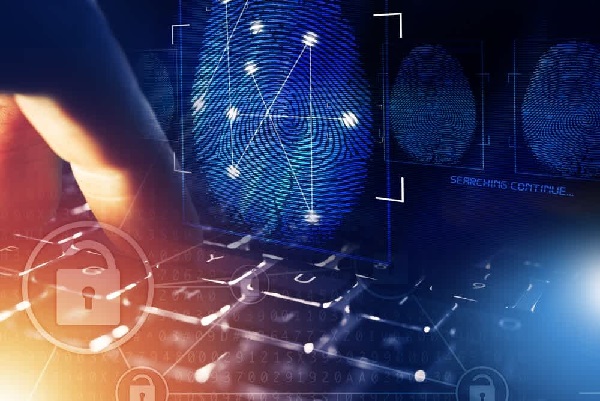In today’s day and age, the world is witnessing significant growth in cybercrimes, and this has increased the need for IT infrastructure services to find powerful methods to counter these attacks. No doubt, preventing cyber attacks is crucial, but when they unfortunately happen, it is necessary to take measures to ensure that they never repeat. Though various methods are used by IT professionals today to build a secure infrastructure, forensic analysis is the most effective one.
What Is Forensic Analysis?
Forensic analysis is the detailed study and documentation of a cyberattack’s cause, behavior, and result. It aims at identifying and analyzing patterns to produce meaningful information that can assist in the invention of new counterattacks to data breaches.
Forensic analysis works by tracking and collecting data from various digital activities in a computer device, network, or infrastructure. IT teams try to find a specific pattern that can assist them in getting information out of that collected data. Also, forensic analysis creates physical evidence from the collected digital information to present in a court hearing related to the cybercrime or breach.
Importance of Forensic Analysis
Cybercriminals are finding new ways to breach someone’s privacy. To stop them from exploiting your infrastructure effectively, you need to take specific steps. Many methods strengthen the infrastructure’s security, and forensic analysis is one of them. Though there are several benefits of regularly conducting forensic analysis, the major ones are:
Identifying Vulnerabilities
Vulnerabilities are hard to find in a well-built infrastructure, but even then, criminals find loopholes in an extensively developed network. Therefore, the primary motive of every IT infrastructure management team is to identify vulnerabilities before criminals do and then effectively salvage them to prevent breaches.
Since forensic analysis compares data from multiple sources, it is easier to find irregularities in the system. Naturally, the faster you identify vulnerabilities, the less time it takes to eliminate them, leaving cybercriminals with no time to strategize attacks.
Preventing Hackers
Forensic analysis helps IT professionals prevent hacks and breaches by speeding up the process of identifying vulnerabilities. The data generated through forensic analysis helps IT professionals stay ahead of hackers by reducing the time needed in identifying loopholes. This way, they can successfully prevent hackers and criminals from breaking into the infrastructure.
Retrieving Data
Data retrieving is crucial in cases such as data breaches, identity thefts, and ransomware attacks. Whether the purpose is to restore the infrastructure or provide evidence in court, IT professionals use forensic analysis to retrieve the deleted data.
When data is deleted from a device, it isn’t permanently deleted but merely hidden from the user and the device itself. However, in forensic analysis, the data from every memory space of the device is collected and interpreted, and therefore, it isn’t too difficult to decrypt and restore that data. IT professionals can perform this task using forensic analysis without any ado.
Better Safety Standards
Naturally, an infrastructure that follows higher safety standards is less likely to suffer an attack than one that follows relatively lower safety standards. If regularly conducted, forensic analysis ensures that nothing crooked escapes the eyes of the IT professionals. This way, it can increase the safety standards and strengthen the infrastructure.
Forensic analysis is a great way to make your infrastructure more robust, but it is of no use if not conducted regularly. Too much gap between two analytical processes grants the criminals the increased time they need to break into your systems. Organizations should regularly conduct forensic analyses to prevent such occurrences.
Data Protection
Since forensic analysis helps identify vulnerabilities, prevent cyberattacks, retrieve deleted data, and establish better safety standards, it isn’t necessary to say that forensic analysis always provides effective data protection. IT teams that use forensic analysis reduce the risk of data breach or loss to a large extent, therefore providing more security to the infrastructure.
Also, enterprises lose their brand image when they suffer data breaches and cyber-attacks. This loss of trust from the user’s side can have adverse impacts on the enterprise that are hard to recover from.
Cost-Effective
Conducting a forensic analysis may appear an unnecessary investment initially, but in the long run, it is the best deal. The effective data protection that forensic analysis provides makes sure that there is no breach. Many enterprises have faced massive losses due to data breaches. But, if your infrastructure uses forensic analysis, there’s no way it can collapse under a breach.
Since people have become conscious about their data and privacy, they don’t like sharing their data with distrusted enterprises. Therefore, brands and infrastructures that have suffered data breaches and cyberattacks in the past are less trustful to the people than those that have defended every attack. So, the forensic analysis also ensures that people don’t lose their trust in your infrastructure or company.
Conclusion
Without any doubt, forensic analysis is the best tool to ensure the safety of the IT infrastructure. Enterprises looking to create a robust infrastructure should put forensic analysis on their priority list because it is the most effective tool for protecting against breaches.
Moreover, it is a cost-effective process that can save an enterprise and its IT infrastructures from loss and suffering distrust of the users. Forensic analysis not only helps IT teams to strengthen the security of infrastructure but also helps maintain the reputation of an enterprise. Forensic analysis is a must-have tool to tackle all cyber-attacks.
